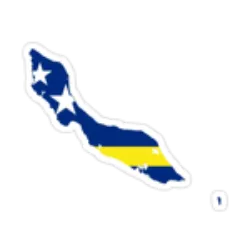Pickled pig ears, known locally as "sulto" in Curaçao

Pickled pig ears, known locally as "sulto" in Curaçao, are a festive appetizer enjoyed by some and rejected by others, with no in-between. Prepared from low-protein cartilage, pig ears are boiled and soaked for several hours before the preparation process. After being cut into thin strips, they are immersed in vinegar and spices for greater softness. Ingredients such as onion, pepper, cloves, bay leaves and chili peppers are sometimes added to the mixture.
Ayakas are an essential delicacy in Curaçao cuisine during the festivities
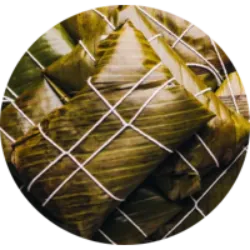
Ayakas are an essential delicacy in Curaçao cuisine during the festivities, originating from Venezuelan tradition. Known as Hallacas in Spanish, these delicacies are true works of culinary art. Each Ayaka is a cornmeal dough mixture filled with beef, chicken or pork, as well as vegetables and dried fruits, carefully wrapped in banana leaves and tied. Ingredients such as raisins, prunes, olives, capers and pearl onions are common. Preparation is the subject of heated debate, and after assembly, the Ayakas are boiled or steamed before being enjoyed.
Test yourself with one of these challenges 👇
Discover some interesting facts about Curaçao Tourism
The history of Liqueur Curação began after the Spanish
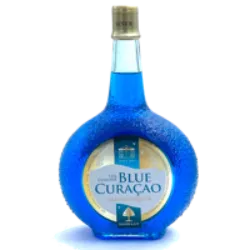
The history of Liqueur Curação began after the Spanish occupation of Curaçao in 1499. Attempts to cultivate orange trees resulted in sour fruits that were unsuitable for consumption. The discovery that the peel of this orange, when dried in the sun, produced a pleasant aromatic oil gave rise to the liqueur. In the 19th century, the Senior family founded the production of Licor Curação with the peels. The success led to imitation challenges, demanding that the term "original" only be used if the liqueur was made with the "golden orange of Curaçao". To ensure authenticity, the liqueur was renamed Curaçao from Curaçao. Production involves harvesting Laraja oranges, drying them in the sun, infusing them in alcohol, distilling, diluting and sweetening. The blue hue is achieved with natural dyes or safe food coloring E133.
Kabritu stoba, a traditional Bonaire goat dish
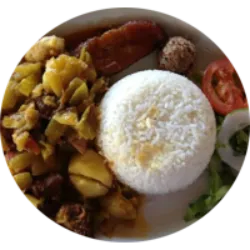
Kabritu stoba, a traditional Bonaire goat dish, is prepared with diced goat meat, butter, onion, garlic, tomatoes, lemon juice, jalapeños, beef broth, paprika, white vinegar, salt and pepper. The meat is browned in butter, followed by the addition of the other ingredients. The dish is transferred to the oven, baked for less than an hour and, when served, is traditionally accompanied by rice or mushrooms.
At Landhuis Chobolobo in Curaçao, visitors can taste a variety of liqueurs
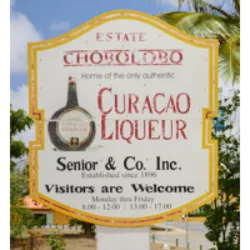
At Landhuis Chobolobo in Curaçao, visitors can taste a variety of liqueurs, create personalized cocktails and learn about the history of the blue liqueur. During the guided tour of the Curaçao Liqueur Distillery, you learn about the distillation process and the history of the liquor, as well as taste samples, including Senior Liqueurs produced since 1896. The patio offers the opportunity to enjoy local ice cream and snacks , and the gift shop allows you to buy souvenirs. The experience provides an in-depth understanding of the importance of liquor to Curaçao as an export product, with tastings, cocktail options and ice cream available.
The Mikvé Israel-Emanuel Synagogue in Willemstad
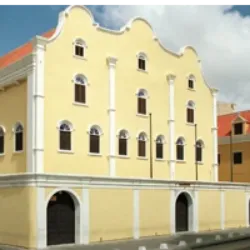
The Mikvé Israel-Emanuel Synagogue in Willemstad, Curaçao is the oldest synagogue in the Americas, known as Snoa. Founded in the 1650s by Spanish and Portuguese Jews, the Mikvé Israel community joined a reformist dissent in the 19th century, forming the current congregation in 1964, affiliated with Reconstructionist Judaism. The current synagogue building, acquired in 1674 and dating from 1730, stands out for its interior similar to the Portuguese Synagogue in Amsterdam. Attached to the synagogue, the Jewish Cultural History Museum displays collections including replicas of tombstones from the oldest Jewish cemetery in the Western Hemisphere, Beit Chaim Bleinheim on Curaçao. On other Dutch islands, such as Sint Eustatius, there are historic synagogues, but no longer in use.
Mambo Beach, or Seaquarium Beach, in the south of Curaçao

Mambo Beach, or Seaquarium Beach, in the south of Curaçao, is a popular private beach with a premium structure, requiring a usage fee. Frequent on weekends, it attracts a variety of visitors, including young people, families and the elderly. The Mambo Beach Club offers nightly parties, while the area has children's playgrounds, a trampoline and an amusement park. With several restaurants, shops and a promenade, the beach caters to all ages, making it a lively and diverse place. Its location close to Willemstad can make it busy, especially on Sundays.
HOME
